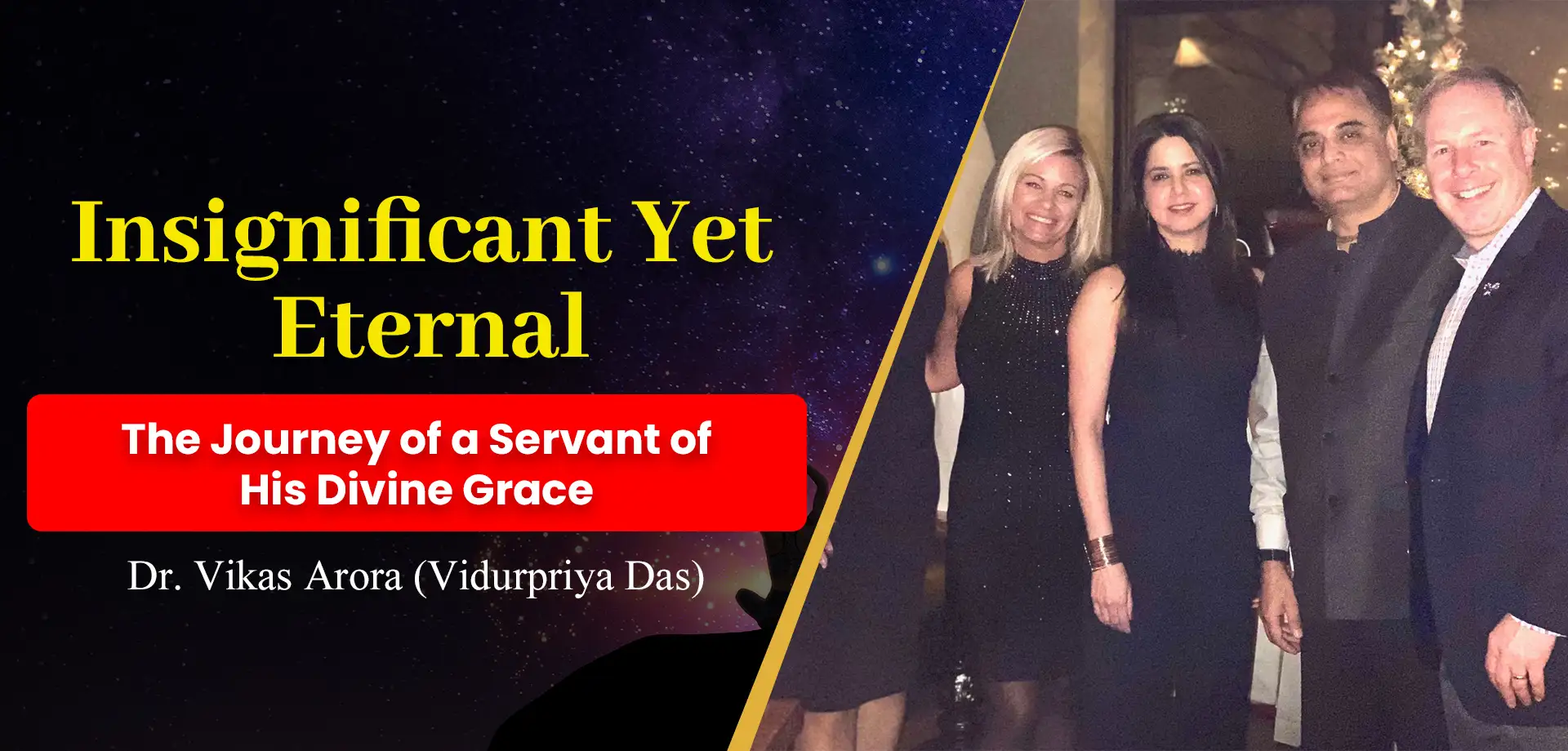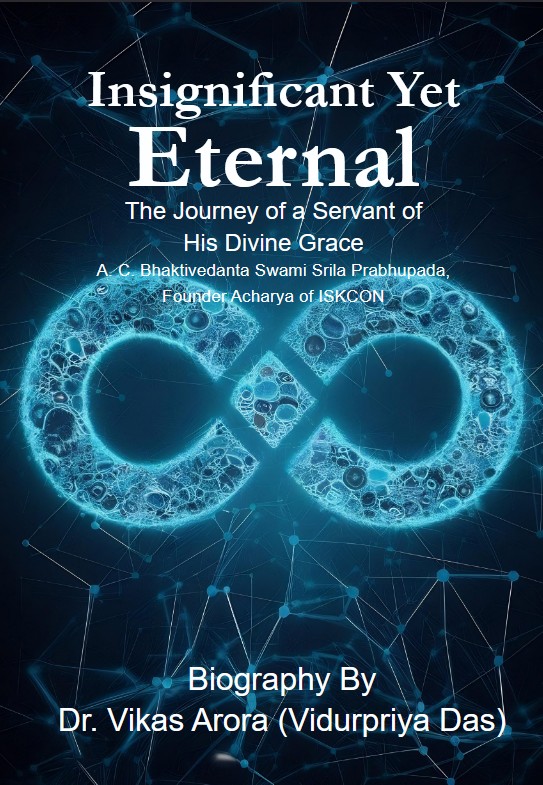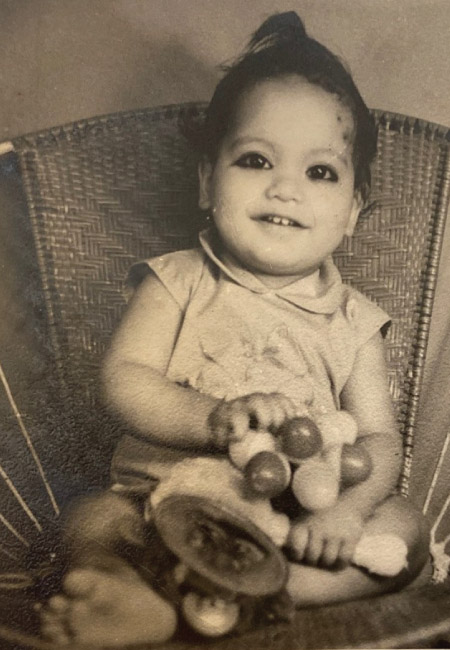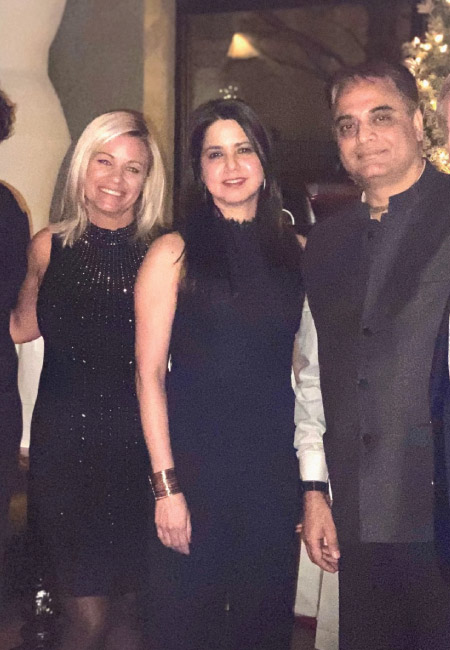

“True greatness lies not in building monuments of steel, but in surrendering every action at the feet of the Divine.”
Introduction
In a quiet village near Bareilly, in the region of Budaun, Uttar Pradesh, a child was born on April 15, 1968, in a modest household that exuded discipline, honesty, and simplicity. Dr. Vikas Arora, who would later come to be known as Vidurpriya Das, began his journey not with grand ambitions, but with the values imparted by a life deeply rooted in dharma and service.
His early years were shaped by a loving, principled family. His father served in a government role that demanded integrity, structure, and silence over rhetoric. He was not the kind to deliver speeches about character—he simply lived it. Vikas absorbed this effortlessly. From him, he learned how to do the right thing without needing an audience. His mother, the spiritual center of the household, managed their life with grace and devotion. Even without overtly labeling herself as religious, she cultivated an atmosphere where service, compassion, and reverence for elders were second nature.
The family relocated often due to his father’s work, which exposed young Vikas to multiple environments, diverse cultures, and various schools. Yet, through all transitions, a few things remained consistent: early rising, discipline, accountability, and humility. These were not lessons written on walls—they were lived, breathed, and quietly modeled.
Academically, Vikas was exceptional. Numbers, logic, and structures fascinated him from an early age. His teachers saw promise in his ability to understand abstract concepts, and classmates often sought his help during exam seasons. But he was never boastful. His brilliance walked hand in hand with his humility, making him not just respected but deeply loved.
His discipline and focus led him to earn a seat at Motilal Nehru Regional Engineering College (MNREC) in Allahabad, now known as MNNIT Allahabad (Prayagraj), where he pursued a Bachelor’s degree in Civil Engineering. Prayagraj didn’t just host his education—it subtly instilled in him a sense of rootedness and moral compass that would guide his choices far beyond the campus gates. In those formative years at MNREC, he immersed himself in the world of design, construction, and applied mathematics. But even amidst academic rigor, there was a subtle void—a quiet longing for something deeper.
Like many high performers, he chased perfection in form and function. But questions began to rise. What was the purpose behind these structures? Why build something lasting in a world that itself is temporary? Though these thoughts were not fully articulated at the time, they planted seeds that would later bloom into full spiritual inquiry.
Phase 1 : Roots of Discipline and Dharma
“Character is not taught; it is absorbed from the example of those who walk before us.”

The life of Dr. Vikas Arora, known spiritually as Vidurpriya Das, began in the serene rural landscape of Fatehganj Purvi, a village nestled near the historical town of Budaun in Uttar Pradesh, India. He was the third child in the family and had two elder brothers who served as early role models and silent pillars in his formative years. This unassuming setting—far from the towering buildings he would one day design—was the quiet forge where his principles, his spiritual compass, and his inner resolve were shaped.
Born into a family that emphasized both discipline and dignity, Vikas’ earliest experiences were marked not by luxuries, but by a profound sense of structure, order, and silent spiritual vibration. His father was a government officer whose life was a living example of accountability and restraint. Not one for verbosity, his father taught more through action than words. If the clock struck 7:00 AM, it meant he had already begun his day. If he promised something, he fulfilled it. The subtle yet profound message was always the same: be honest, be disciplined, and never show off.
His mother, by contrast, was a nurturing force—a woman of silent devotion, care, and gentleness. Her temple was the home, and her deity was her family. Though she didn’t preach scriptures or engage in overt religious rituals in a formal sense, she naturally radiated qualities found in the great characters of the Puranas—patience, tolerance, and unconditional service. The spiritual vibrations of his household were not in the form of elaborate rituals, but in the silent love and integrity with which life was lived.
His mother, by contrast, was a nurturing force—a woman of silent devotion, care, and gentleness. Her temple was the home, and her deity was her family. Though she didn’t preach
scriptures or engage in overt religious rituals in a formal sense, she naturally radiated qualities found in the great characters of the Puranas—patience, tolerance, and unconditional service. The spiritual vibrations of his household were not in the form of elaborate rituals, but in the silent love and integrity with which life was lived.
Schooling began in modest institutions across various towns in Uttar Pradesh, depending on where his father was posted. These frequent moves could have been disruptive for a child, but for Vikas, each relocation became a new window into human behavior, language, and adaptability. He learned to settle into new environments quickly, to observe before reacting, and to value consistency amidst change. It also taught him that material settings may shift, but internal values must stay rooted.
Phase 2 : Awakening and Association
“When the student is ready, the teacher appears— not always in the form of lectures, but through silent association.”

As Dr. Vikas Arora stepped beyond the walls of his disciplined childhood home into the expansive and demanding academic world of Motilal Nehru Regional Engineering College (MNREC), Allahabad, a new chapter of intellectual and personal rigor unfolded. The boy from Fatehganj Purvi now found himself among some of the sharpest minds in the country, surrounded by ambition, innovation, and the ticking clock of competitive engineering education.
Unlike many of his peers who viewed college as a springboard into lucrative careers or corporate ladders, Vikas approached this new world with a rare sincerity. To him, engineering was not merely a profession—it was an act of service to society, a method to bring stability, safety, and structure to the world around him. This mindset alone set him apart. He wasn’t there to collect titles or chase GPA points—he was there to build, to learn, and above all, to do it with integrity.
The transition from village life to college hostel culture could have been jarring, but Vikas adapted with remarkable ease. He didn’t indulge in common distractions. Instead, he kept a structured lifestyle. Mornings began early. Study schedules were consistent. Meals were simple. He maintained his personal space with the same order and cleanliness that mirrored his internal world. He wasn’t trying to impress anyone; he was just doing what he believed was right.
He developed a reputation among his classmates as someone you could rely on—not just for lecture notes or lab help, but for emotional balance. When tensions rose during project deadlines or exams, Vikas was often the voice of calm. He would say things like, “Panic solves nothing. Do what you can, honestly, and leave the rest.” These weren’t empty words. He lived them. His approach to academics was systematic, but not stressful.
Among professors, too, he stood out—not as the most flamboyant or outspoken student, but as one who listened deeply, asked intelligent questions, and never tried to manipulate the system. He never took shortcuts, never blamed others for his challenges, and never sought favors. If he didn’t understand something, he stayed back after class. If he failed to meet his own standards, he quietly reflected and improved. His humility wasn’t for show—it was the essence of who he was.
In labs and design studios, he showed an early inclination toward structural analysis and civil integrity—not just as technical disciplines, but as moral metaphors. He would often reflect on how a structure stands only when its foundation is strong, and how the same applied to life. For him, engineering principles were more than formulas—they were life lessons. His projects, while technically sound, also carried a sense of deeper insight. He believed every beam, every pillar, every joint had a purpose, and that purpose was to serve the whole—a philosophy that mirrored his spiritual journey, long before he had even encountered Krishna consciousness.
Phase 3 : Sannyasa Spirit — Living the Renounced Life
“I was an achiever in the material world… but I was a failure in remembering Krishna.”
For Dr. Vikas Arora, the completion of his Master’s degree in Structural Engineering from the University of Arkansas marked not an ending, but the beginning of a deeper, more profound awakening. Having achieved the academic and professional milestones that many only dream of, he now stood at a crossroad—not between job offers, but between outer accomplishment and inner calling.
The transformation did not arrive with thunder and lightning. Instead, it came gently—like the slow rising of dawn. It was during a casual game of cricket with friends in Dallas that one of them suggested visiting a temple later that evening. That temple happened to be ISKCON Dallas, and that moment would open a doorway to a life he had never imagined, yet instantly recognized.
The atmosphere was unlike anything he had encountered before. The warmth of the devotees, the rhythmic chanting of the Hare Krishna maha-mantra, and the genuine sense of joy and surrender struck a deep chord. For someone trained in logic and structure, this spiritual ambiance offered a different kind of architecture—one built on devotion, discipline, and divine connection.
That same day, he picked up a copy of “The Science of Self-Realization” by His Divine Grace A.C. Bhaktivedanta Swami Srila Prabhupada. It was the first spiritual book he ever read with complete attention. During his breaks at work or late at night, he found himself immersed in the profound truths the book offered—not as philosophical abstraction, but as living reality. Each page seemed to echo thoughts he had carried quietly for years: that we are not this body, that the soul is eternal, and that service to God is the highest purpose of life.
The teachings did not conflict with his rational mind; they complemented it. Here was a worldview that made sense, that offered purpose without pretension. The idea that life is meant for service, not accumulation began to resonate more powerfully than any theory of civil engineering he had ever studied.
In 2001, he embraced the grihastha ashram and got married—hoping to integrate spiritual service with family life. Gradually, Vikas began to visit the temple more regularly. He observed how devotees treated each other, how they prioritized humility over ego, and how they found joy not in possession, but in sankirtan (congregational chanting) and seva (service). These were not passive rituals; they were active declarations of surrender. And in that surrender, he found strength.